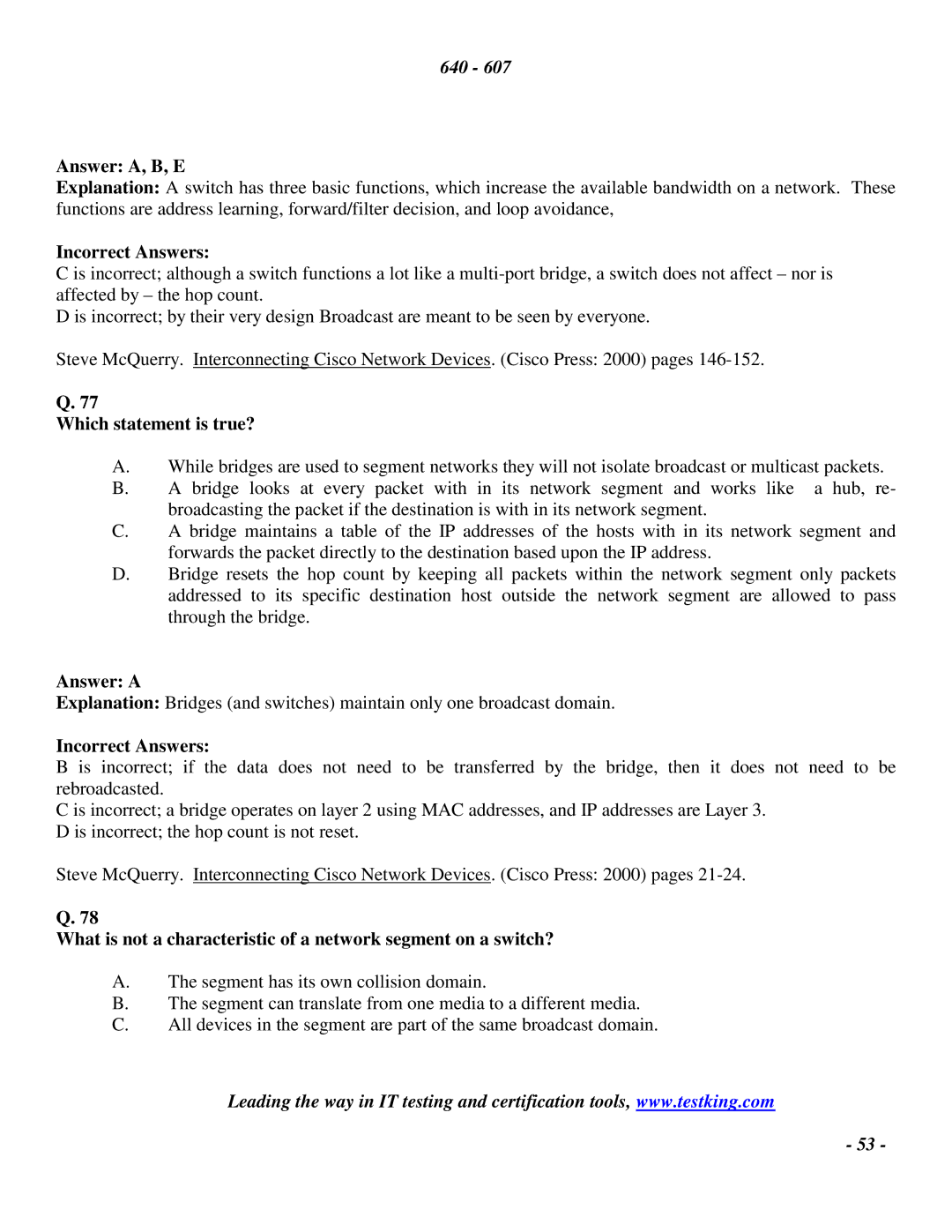640 - 607
Answer: A, B, E
Explanation: A switch has three basic functions, which increase the available bandwidth on a network. These functions are address learning, forward/filter decision, and loop avoidance,
Incorrect Answers:
C is incorrect; although a switch functions a lot like a
D is incorrect; by their very design Broadcast are meant to be seen by everyone.
Steve McQuerry. Interconnecting Cisco Network Devices. (Cisco Press: 2000) pages
Q. 77
Which statement is true?
A.While bridges are used to segment networks they will not isolate broadcast or multicast packets.
B.A bridge looks at every packet with in its network segment and works like a hub, re- broadcasting the packet if the destination is with in its network segment.
C.A bridge maintains a table of the IP addresses of the hosts with in its network segment and forwards the packet directly to the destination based upon the IP address.
D.Bridge resets the hop count by keeping all packets within the network segment only packets addressed to its specific destination host outside the network segment are allowed to pass through the bridge.
Answer: A
Explanation: Bridges (and switches) maintain only one broadcast domain.
Incorrect Answers:
B is incorrect; if the data does not need to be transferred by the bridge, then it does not need to be rebroadcasted.
C is incorrect; a bridge operates on layer 2 using MAC addresses, and IP addresses are Layer 3. D is incorrect; the hop count is not reset.
Steve McQuerry. Interconnecting Cisco Network Devices. (Cisco Press: 2000) pages
Q. 78
What is not a characteristic of a network segment on a switch?
A.The segment has its own collision domain.
B.The segment can translate from one media to a different media.
C.All devices in the segment are part of the same broadcast domain.
Leading the way in IT testing and certification tools, www.testking.com
- 53 -
